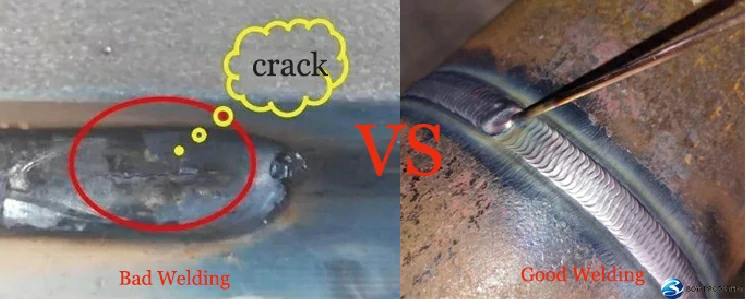Bad Welding vs Good Welding: Key Differences Explained
Welding is a crucial process in many industries, from construction to automotive manufacturing. However, the quality of the welding can vary greatly, with some welds being strong and durable, while others may be weak and unreliable. In this section, we will explore the key differences between bad welding and good welding.
One of the most obvious differences between bad welding and good welding is the appearance of the weld. A good weld will have a smooth and even bead, with consistent penetration into the base materials. In contrast, a bad weld may have irregularities, such as undercutting, cracking, or porosity. These visual defects can weaken the weld and make it more prone to failure.
Another key difference between bad welding and good welding is the strength of the bond. A good weld will create a strong and reliable connection between the two pieces of metal being joined. In contrast, a bad weld may have weak spots or areas of inconsistency, leading to a less secure bond. This can result in structural failures or other issues down the line.
One important factor in determining the quality of a weld is the skill and experience of the welder. A skilled welder will know how to properly prepare the materials, select the right welding technique, and ensure that the weld is completed to the bad welding vs good welding. In contrast, a novice welder may make mistakes that compromise the integrity of the weld, leading to a lower-quality result.
In addition to the skill of the welder, the equipment and materials used can also have a significant impact on the quality of the welding. Good welding requires high-quality welding equipment, such as a reliable welding machine, appropriate electrodes, and the right shielding gas. Using subpar equipment or materials can result in poor weld quality and a less durable bond.
One of the most important aspects of good welding is proper preparation. This includes cleaning and prepping the materials, selecting the correct welding process, and ensuring that the welding environment is free from contaminants. Proper preparation is essential for creating a strong and reliable weld that will stand up to the demands of its intended use.
Overall, the key differences between bad welding and good welding come down to attention to detail, skill, and preparation. A good weld will be visually appealing, strong, and durable, while a bad weld may have visual defects, weak spots, or other issues that compromise its integrity. By understanding these differences, welders can strive to achieve the highest standards of quality in their work, ensuring that their welds are strong, reliable, and built to last.




Comments
Post a Comment